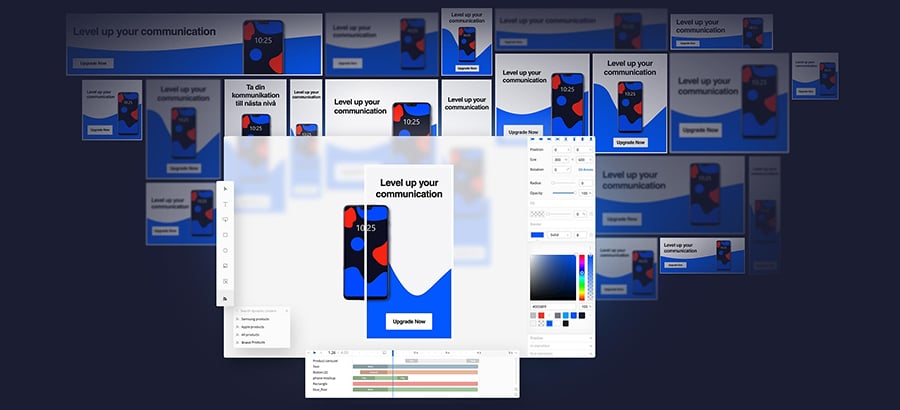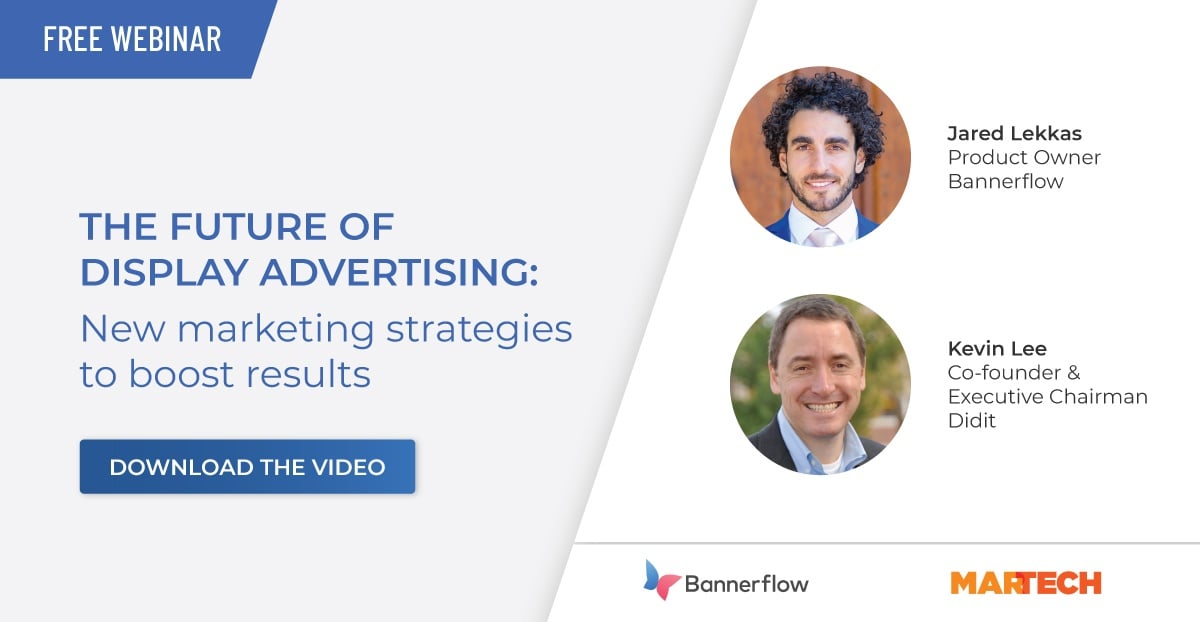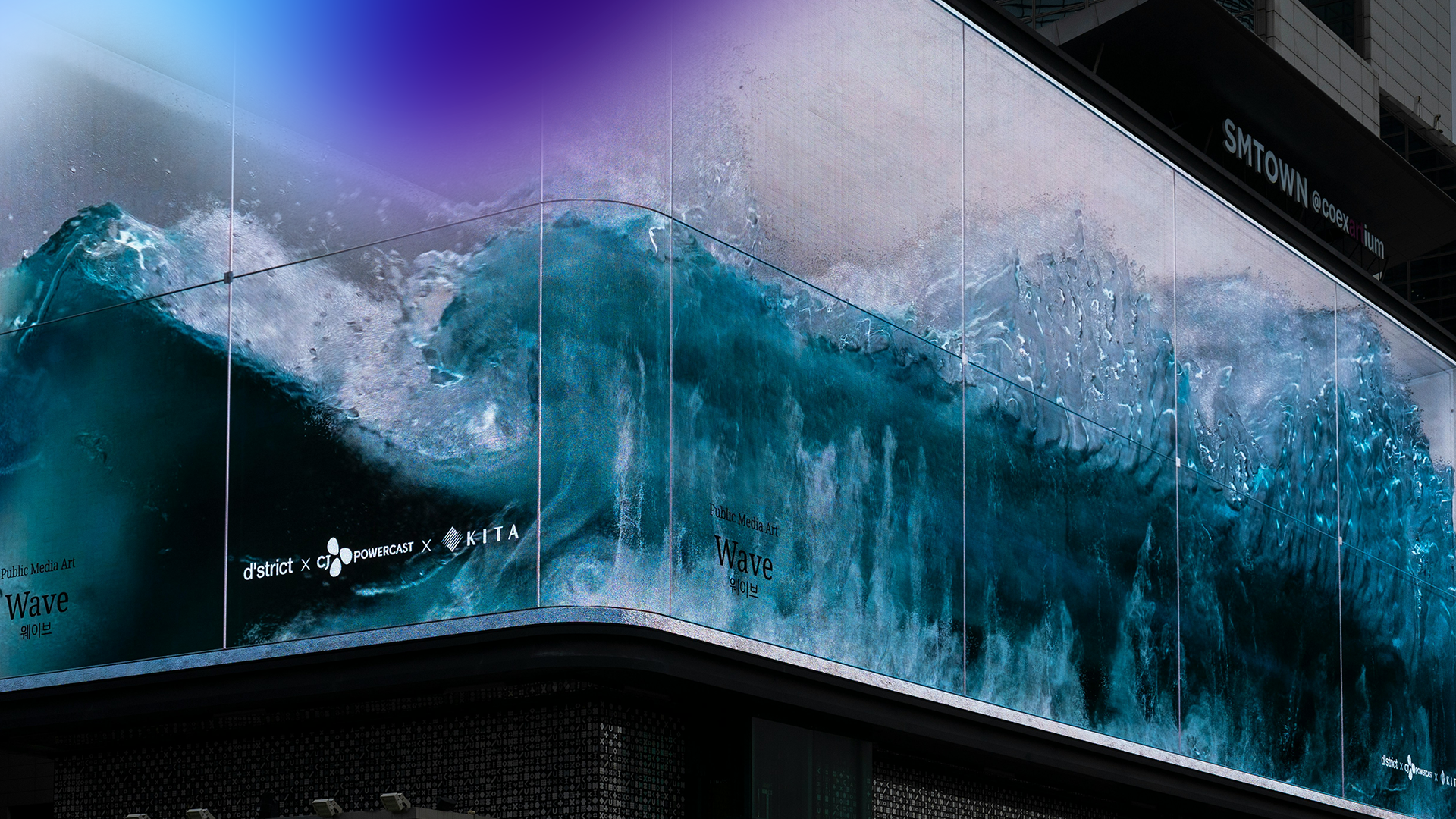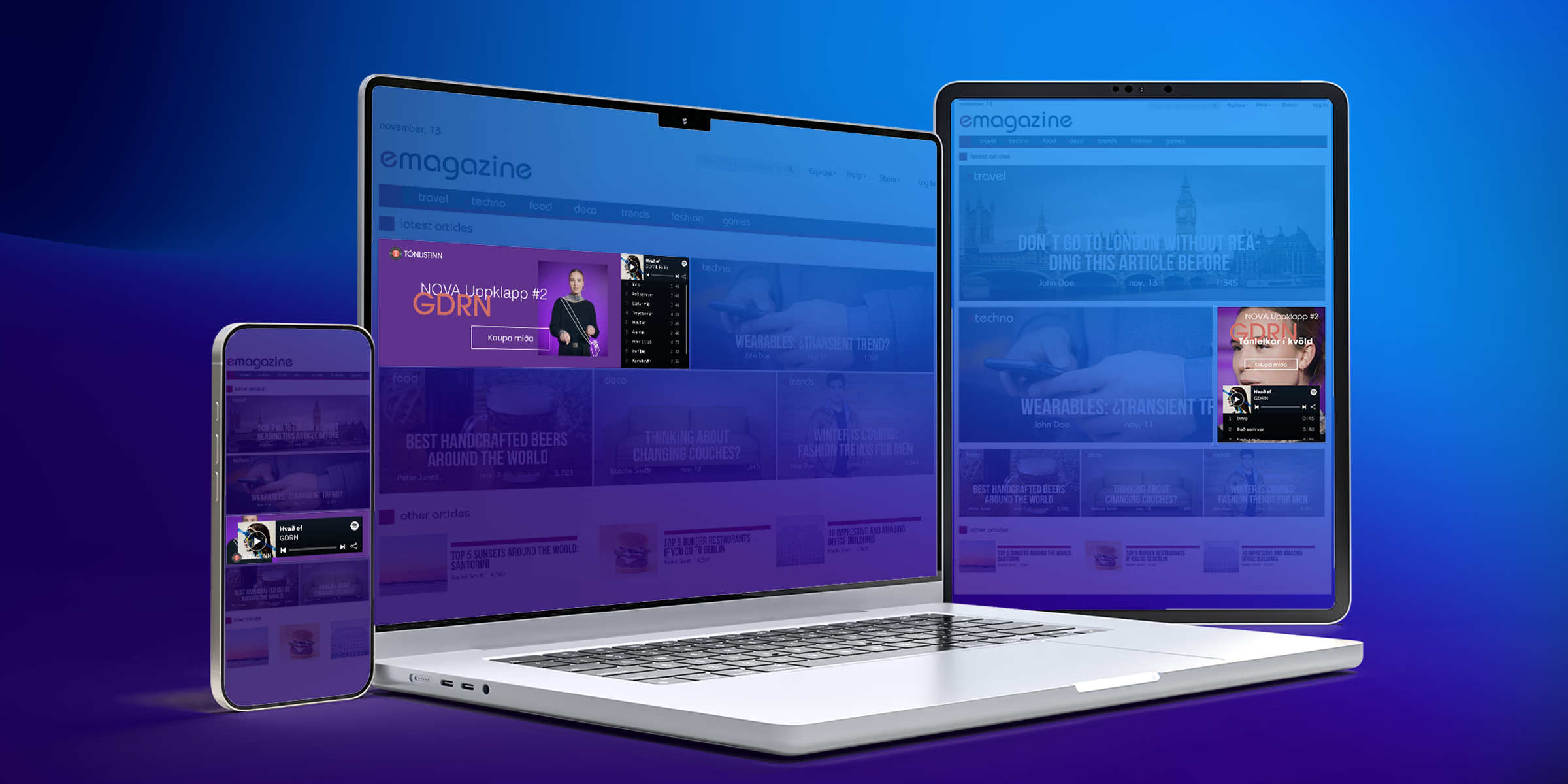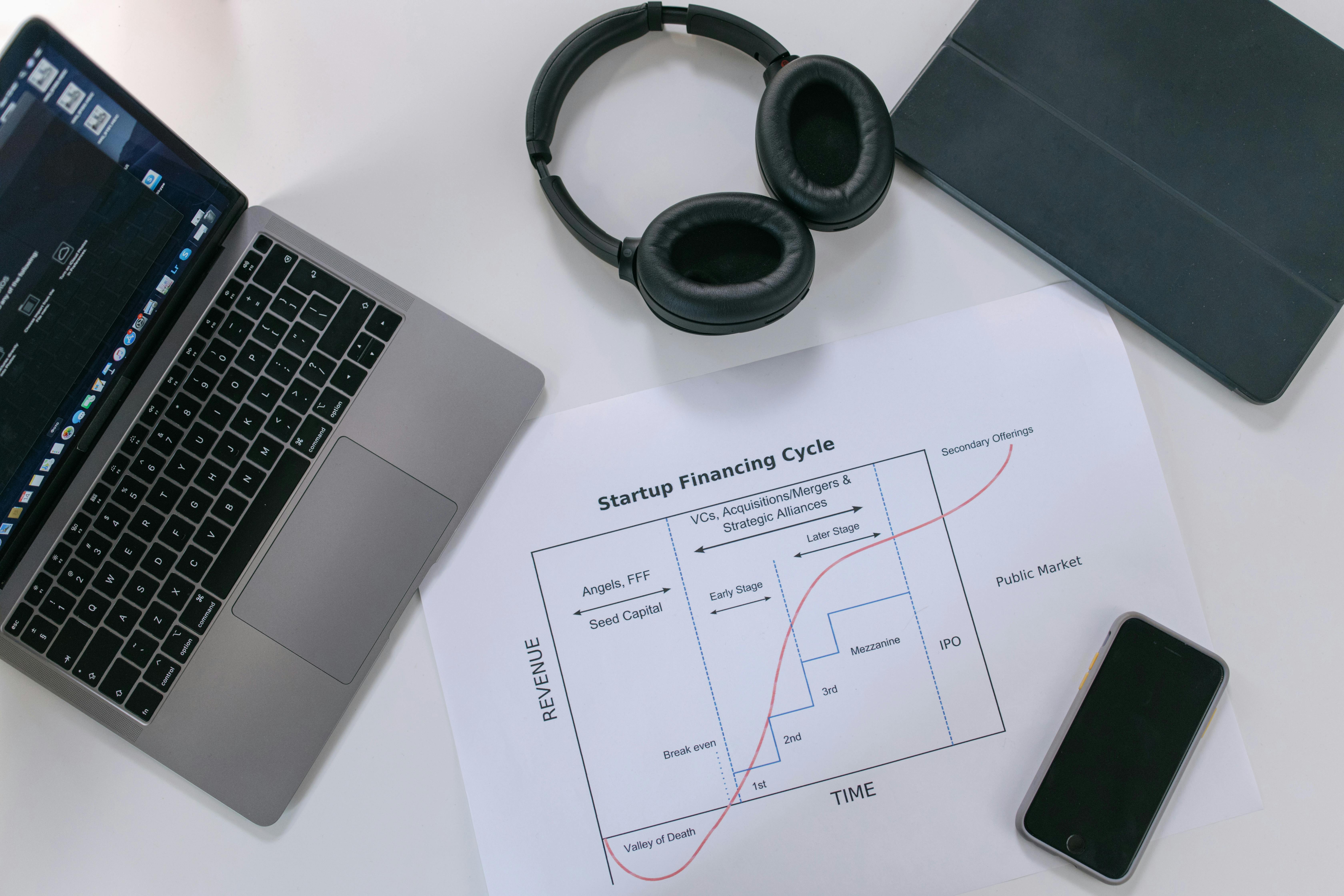Think improving your click–through rate (CTR) is all about design? That’s where you’re wrong.
The average internet user is served 1,700 banner ads per month. The Google Display Network alone reaches 90% of global Internet users. We’ve all heard the stats: you’re more likely to complete Navy SEAL training or climb Mount Everest than click on a banner ad, etc…
But do not be disheartened – that’s for the sheep. We’re talking about leaving the herd behind and creating truly exceptional banner campaigns.
The literature on ‘bold copy’ and ‘exciting design’ in relation to improving click-through rate is in abundance and quite frankly, tired. This article outlines how to improve your CTR through optimisation across channels and audiences. It will also introduce a new approach to your display advertising through innovative design.
While banner blindness is real, why would marketers be heavily investing in display ads if they didn’t work? Last year’s worldwide ad spend increased by 15% while digital ad spending is projected to reach US$701.20bn in 2023. People must be clicking.
By now you already know the merits of ‘bold copy’ and ‘exciting design’, so we won’t bore you with that. Instead, this article outlines how to improve your CTR through optimisation across channels and audiences. It will also introduce a new approach to your display advertising through innovative design.
What is click-through rate (CTR)
Click-through rate (CTR) is a digital marketing performance metric. In banner advertising, it measures each time a viewer clicks through to the advertiser’s website.
It’s calculated by dividing the number of clicks on your ad by the number of impressions (times your ad was served). For example, if you have 10 clicks out of 250 impressions, your CTR would be 4%.
You want to aim for a high CTR as it means you’re targeting the right people and the ad is working – people are interested in your service or product.
Why is CTR important
The main objective of display advertising is to boost traffic to your website to increase brand awareness and sales.
While impressions measure the number of times your ad has been served, CTRs are a more tangible metric. Google Adwords serves almost 30 billion impressions per day, but it’s unlikely that most of those ads are seen, let alone lead to a website visit.
CTRs reflect how interesting your ads are to users, allowing you to adapt and optimise them. It helps you understand your audience. A low click-through rate might mean you’re targeting the wrong audience or focusing on the wrong message. Measuring click-throughs can help you improve your creative concepts and imagery or find better keywords.
CTRs also affect your Quality Score on Google Ads. If you have high CTRs, you can lower the costs of your ads while maintaining or improving your ad position. The only time a high CTR is bad is if you’re using pay-per-click (PPC) and have a low conversion rate.
What is a good CTR
The average click-through rate for display ads is just under 0.1%, which is lower than search ads (3-4%). As mentioned, you should aim for a higher CTR, meaning more people are engaging with your ad.
Social media seems to have a slightly higher click-through rate, with figures reaching 1.21% in the third quarter of 2022.
CTR rates depend on several factors, including the industry and platform the ads are displayed on. But it gets interesting when looking at feeded display ads (personalised ads) vs non-feed ads.
Bannerflow’s first-party data gathered from its platform shows that the average CTR for personalised ads hovers at around 2.30% – significantly higher than non-personalised ads. You can expect a higher CTR with highly targeted personalised ads.
Get a headstart
Before we even begin, make sure you’ve ticked all these boxes for your banner ads:
- Colour that matches your brand identity and inspires the right emotion.
- Text that is readable and contrasts with your background.
- High quality and relevant images.
- Having a logo that is clear and stands out.
- Consider animations or in–banner video to catch viewers’ attention.
Once you’ve included these fundamental elements, you’re clear to move beyond the basics.
It’s time to create exceptional and relevant banner ads that take your conversion rates to the next level.
1. Think mobile–first for higher click–through rates
The need to optimise your adverts across channels has been spoken of many times. By 2022 it’s predicted that mobile will account for 77.2% of all digital ad spend. Every man, woman, and their dog is talking about having a mobile–first strategy.
There’s a reason for this. Here at Bannerflow, we ran a little experiment: over a period of one week, over 1,477,402,366 impressions, mobile showed a CTR of 0,16% and desktop a far lower figure of 0,06% (13th to 20th June 2018). That’s quite the difference. Mobile undoubtedly wins for CTR.
It’s important to remember CTR isn’t the only means of conversion. Yet if you’re measuring success by this metric, then the answer is clear. Wait for it… think mobile-first.
Scaling your campaigns from the smallest size to the biggest is crucial for a successful mobile-first strategy. And it’s easier with a smart scaling tool. Optimise your adverts across devices with a CMP.
Top tip: Use Sizmek’s study to see how mobile CTR performed better across all industries; with entertainment and electronics leading the way.
2. Avoid standardised banners
According to Moz, 40% of viewers are more likely to engage with a display ad if they consider it relevant to them. In fact, relevance can take many forms. By tailoring your advert to your consumers with targeted messaging or taking advantage of external factors, you are more likely to engage their interest.
Across channels, advertisers are altering campaigns to suit location, weather, and time of day. Why should it be different for your banner ads? Standardised banner campaigns are partly to blame for CTR as low as 0.01%. The advertising industry can do better – you can do better.
A great way to increase the relevance of your campaigns is to schedule them alongside key dates and events. If you’re working within the e–commerce industry, you can target viewers with those handy Christmas shopping dates.
Moment marketing is another ingenious way that brands can interact with a captive audience. These are just some suggestions for increasing the relevance of your campaigns. Consider how external factors can be applied to your own banner campaigns.
Something as simple as time of day and days of the week can have an impact on CTR rates too. Note that CTR rates can drop as much as 12% during the week compared the weekend. Engagement is higher from 6am to 1pm as well.
Even better, all of these are easy to implement with an integrated scheduling tool found in premium creative management platforms (CMP).
Use targeting for relevant campaigns
In this post–GDPR world you shouldn’t take targeted or retargeted advertising as a given. Indeed, it’s hard to predict how future targeting will work. However, if you are targeting, there are exciting ways you can increase the relevance of your campaigns through dynamic creative.
Use opted-in first-party and public contextual data to serve adverts that viewers might actually want to see. And crucially, more likely to click on!
Top tip: Use a CTR calculator to see how your CTR compares in your industry. If it’s lower than average, use external factors and targeting to improve your conversion.
3. Consider where you place your advert
Placement of your advert ‘above the fold’ is a tried and tested practice. Reports have shown that adverts placed at the top of the page attract significantly higher impressions.
But we recommend thinking beyond the placement of your advert, instead, think about how geographical location and publishers affect CTR.
Consider your network and how that influences conversion. It’s all very well having a banner at the top of a publishers page, but if it’s a blog on My Little Pony 2017 hairstyles your advert for men’s shaving cream might not convert (then again, who knows…) Certain networks have publishers with higher viewability rates and perhaps more relevant traffic to your brand.
Location can be an interesting experiment for CTR rates. Different countries have differing CTR, with Singapore on average 0.19% and Finland 0.05%. Where you place your advert can have a significant impact on conversion too.
A/B test your networks to get the best results. Through testing audiences, segments, and times of day for your online ads you are more likely to get the most relevant impressions.
Top tip: Have a look at Google’s study on viewability insights to see how each ad size performs on page placement. Remember, placement isn’t everything though – A/B test your networks to get results.
4. Innovate for better click–through rate
So we promised not to talk ‘exciting design’ but stick with us here. We’re not lecturing on the need for pretty pictures or using bold colours to attract attention. Instead, use rich media and dynamic creative to stand above the rest with your banner ads.
Keyword optimisation
Relevant keywords are the key to healthy CTRs, so make sure you’re focusing on the right ones. When doing keyword research, remember to look beyond search volume. Consider commercial intent keywords and refine them as much as possible with location and other details. For example, “best plumbers in Sheffield” or “kids ballet classes London”. Avoid information keywords, such as questions, as they lack commercial intent.
You can also improve CTR by optimising your ad to include brand keywords. Don’t just use your own brand, include partners and even competitors brands to entice them away from the competition and increase your brand’s exposure.
Don’t forget to set negative keywords as they will exclude certain terms from your campaign and help keep your ad targeted at the right people. For example, if you’re selling new cars, set “second-hand”, “old”, and “used” as negative keywords to prevent your ad from showing to the wrong type of buyers.
Rich media and advanced formats
In the early days of display advertising, advanced formats were something designers could only dream of. However nowadays, whatever your industry, banners can benefit from a range of advanced features.
For instance, e–commerce can display a selection of products on carousel banners. For iGaming, feeded content such as live odds and scores means you can provide for timely and relevant adverts.
It’s all about maximising the space with innovative design and displaying the most relevant information to your potential customers. Customers of Bannerflow have reported as high as 200% increase in CTR through the use of advanced formats. The stats support the use of rich media. Listen to them.
Something as simple as adding in–banner video to your advert can dramatically increase CTR. Emarketer reported that in the first quarter of 2018, CTR was as high as 0,26% for North America – drastically higher than our usual average of 0,1%.
Dynamic creative and DCO
Plus with dynamic creative, there are so many possibilities. Whether it’s through geo-targeting, sequential storytelling, or behavioural prospecting. With these methods, you can present the right message, to the right person, at the right time.
DCO builds on dynamic creative and is all about automatically tailoring your messages. As we’ve seen, relevance is key for conversion. Design elements are automatically adjusted to consider current events. For instance, a football banner ad will adjust design depending on who won the match.
Relevant and exciting campaigns convert. We don’t have to tell you that. But with new technologies, converting campaigns are more within reach than ever.
Top tip: This comprehensive study by Smart Insights will show you just how much better rich media and in-banner video performs against traditional ad formats. Just imagine the possibilities with dynamic creative…
5. Optimise with your viewers in mind
Optimisation is key. You can follow our advice and create the most beautiful adverts and still not reach that target CTR. So what next? You can only understand what resonates with your customers through A/B testing features of your adverts.
Unsure how best to do this? Use tools to discern where the problem areas in your adverts are; heatmaps are a great way of doing this. Then it’s simply a matter of comparing variants in your advert until you find the solution that converts best. To learn more read our how–to guide here.
In traditional display advertising upon publication, you washed your hands of your campaign and moved on to the next project. But now, with the technology to A/B test to your heart’s content, optimisation becomes an integral part of improving your click-through rate.
Top tip: If Donald Trump can A/B test, then you certainly can too.
Bonus Tip: Click Fraud
According to Statista, the cost of click fraud has risen in the four years between 2018 and 2023, from $35 billion to $100 billion. It’s all very well us talking about the need for higher click-through rates, but if these clicks are fraudulent, then this becomes redundant.
So how do you combat click fraud? The following steps can help identify click fraud:
- Keeping track of your performance metrics is essential. If you notice sudden spikes in activity or budget it may be a sign that something isn’t right and needs more investigation. Extremely high bounce rates could also be an indicator of fraudulent clicks.
- Look at your website’s traffic sources to make sure there is no suspicious activity going on. Examining the IP address information of your ad clicks can tell you which areas are most active and may help identify click fraud.
- Use heatmaps to help identify ad fraud. If you notice a pattern indicative of bot activity – clicking in the same point every time – then you can block these bots from affecting your overall stats.
- Finally, investing in anti-click fraud tools is the best way to protect your business from any malicious activity. Bot management solutions can help you keep your accounts safe through detecting and blocking suspicious activities
Conclusion
CTR doesn’t have be everything for measuring success. But it’s still important to get the best CTR possible for the most effective ads.
When it comes to improving the conversion of your banner ads, it is clear that good design and copy are not enough. In the competitive arena of digital advertising, you should use innovative features, relevance, and placement as important factors to increase conversion.
Want to know more about how Bannerflow can increase your digital marketing effectiveness? Contact us to learn more.
